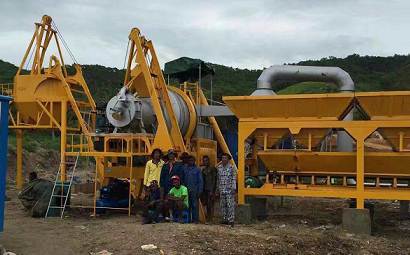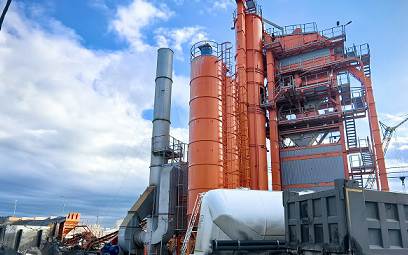In-depth analysis of slurry seal: from thickness to application, a comprehensive understanding
The thickness of slurry seal is usually between 1-3 cm, and the specific thickness selection depends on factors such as road conditions and usage requirements. Slurry seal is widely used in road maintenance and can effectively improve road performance and service life.
Slurry seal is a commonly used road maintenance technology, and its thickness is usually between 1-3 cm. This seal material is mainly composed of emulsified asphalt, cement, filler, water and additives, which are mixed and stirred in a specific proportion. Slurry seal plays an important role in road maintenance. Below we will comprehensively analyze it from the aspects of thickness selection, construction technology and application.

1. Thickness selection
The thickness selection of slurry seal needs to be comprehensively considered based on factors such as road conditions and usage requirements. Generally speaking, for slightly damaged roads, a thinner slurry seal, such as 1-2 cm, can be selected; for roads with more serious damage, a thicker slurry seal, such as 2-3 cm, needs to be selected. In addition, factors such as the climate conditions and traffic volume in the area where the road is located need to be considered to ensure that the slurry seal can achieve the best maintenance effect.
2. Construction technology
The construction technology of slurry seal has an important impact on its quality and effect. During the construction process, it is necessary to ensure that the mixture is stirred evenly to avoid segregation. At the same time, environmental factors such as construction temperature and humidity also need to be strictly controlled to ensure that the slurry seal can fully combine with the road surface. In addition, during the construction process, attention should be paid to factors such as construction speed and compaction to ensure that the slurry seal can achieve the expected effect.
3. Application
Slurry seal has a wide range of applications in road maintenance. It can not only effectively repair the damage on the road surface and improve the flatness of the road, but also enhance the waterproof and wear resistance of the road and extend the service life of the road. At the same time, slurry seal also has a certain environmental protection, which can reduce the dust and noise pollution generated during road maintenance.
In summary, slurry seal is a commonly used road maintenance technology, and its thickness is usually between 1-3 cm. In practical applications, we need to select the appropriate thickness and construction technology based on factors such as road conditions and usage requirements to ensure that the slurry seal can achieve the best maintenance effect. At the same time, with the advancement of science and technology and technological innovation, we believe that slurry seal technology will play a more important role in future road maintenance.
 Albanian
Albanian  Russian
Russian  Arabic
Arabic  Amharic
Amharic  Azerbaijani
Azerbaijani  Irish
Irish  Estonian
Estonian  Odia (Oriya)
Odia (Oriya)  Basque
Basque  Belarusian
Belarusian  Bulgarian
Bulgarian  Icelandic
Icelandic  Polish
Polish  Bosnian
Bosnian  Persian
Persian  Afrikaans
Afrikaans  Tatar
Tatar  Danish
Danish  German
German  French
French  Filipino
Filipino  Finnish
Finnish  Frisian
Frisian  Khmer
Khmer  Georgian
Georgian  Gujarati
Gujarati  Kazakh
Kazakh  Haitian Creole
Haitian Creole  Korean
Korean  Hausa
Hausa  Dutch
Dutch  Kyrgyz
Kyrgyz  Galician
Galician  Catalan
Catalan  Czech
Czech  Kannada
Kannada  Corsican
Corsican  Croatian
Croatian  Kurdish (Kurmanji)
Kurdish (Kurmanji)  Latin
Latin  Latvian
Latvian  Lao
Lao  Lithuanian
Lithuanian  Luxembourgish
Luxembourgish  Kinyarwanda
Kinyarwanda  Romanian
Romanian  Malagasy
Malagasy  Maltese
Maltese  Marathi
Marathi  Malayalam
Malayalam  Malay
Malay  Macedonian
Macedonian  Maori
Maori  Mongolian
Mongolian  Bengali
Bengali  Myanmar (Burmese)
Myanmar (Burmese)  Hmong
Hmong  Xhosa
Xhosa  Zulu
Zulu  Nepali
Nepali  Norwegian
Norwegian  Punjabi
Punjabi  Portuguese
Portuguese  Pashto
Pashto  Chichewa
Chichewa  Japanese
Japanese  Swedish
Swedish  Samoan
Samoan  Serbian
Serbian  Sesotho
Sesotho  Sinhala
Sinhala  Esperanto
Esperanto  Slovak
Slovak  Slovenian
Slovenian  Swahili
Swahili  Scots Gaelic
Scots Gaelic  Cebuano
Cebuano  Somali
Somali  Tajik
Tajik  Telugu
Telugu  Tamil
Tamil  Thai
Thai  Turkish
Turkish  Turkmen
Turkmen  Welsh
Welsh  Uyghur
Uyghur  Urdu
Urdu  Ukrainian
Ukrainian  Uzbek
Uzbek  Spanish
Spanish  Hebrew
Hebrew  Greek
Greek  Hawaiian
Hawaiian  Sindhi
Sindhi  Hungarian
Hungarian  Shona
Shona  Armenian
Armenian  Igbo
Igbo  Italian
Italian  Yiddish
Yiddish  Hindi
Hindi  Sundanese
Sundanese  Indonesian
Indonesian  Javanese
Javanese  Yoruba
Yoruba  Vietnamese
Vietnamese  Hebrew
Hebrew  Chinese (Simplified)
Chinese (Simplified)






